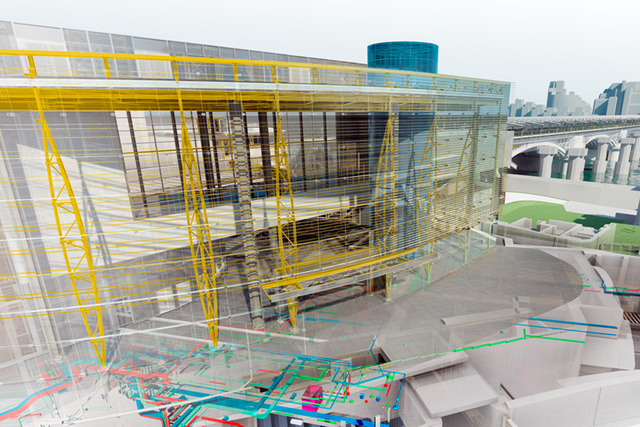In recent years, technology has revolutionized numerous industries, and one of the most promising advancements is the integration of 5D simulation. This innovative technology combines 3D modeling with the dimension of time, enabling organizations to visualize and analyze projects in a dynamic and interactive manner. By incorporating real-time data and virtual environments, this are holds immense potential in optimizing processes, improving decision-making, and enhancing overall efficiency across various industries. In this article, we will delve into the exciting possibilities that 5D simulation brings to different sectors.
Construction Industry
Streamlining Project Planning
In the construction industry, accurate planning is crucial to avoid delays, cost overruns, and errors. 5D simulation allows stakeholders to visualize the entire construction process in a virtual environment, incorporating elements such as design, scheduling, cost estimation, and resource allocation. By simulating different scenarios, construction professionals can identify potential bottlenecks, optimize resource allocation, and improve project timelines.
Enhancing Collaboration
Collaboration is essential in construction projects involving multiple teams and stakeholders. 5D simulation facilitates seamless collaboration by providing a shared platform where all parties can visualize and contribute to the project. Real-time updates and synchronized data enable better communication, reduce conflicts, and enhance decision-making, leading to improved project outcomes.
Manufacturing Industry
Optimizing Production Processes
In the manufacturing industry, 5D simulation allows companies to optimize production processes by analyzing factors such as layout design, machine utilization, and workflow efficiency. By simulating different production scenarios, organizations can identify bottlenecks, streamline workflows, and minimize downtime. This technology empowers manufacturers to make informed decisions, enhance productivity, and reduce costs.
Virtual Testing and Prototyping
Traditionally, physical prototypes and tests have been time-consuming and expensive. However, with 5D simulation, manufacturers can create virtual prototypes and conduct virtual testing, saving time and resources. By simulating the behavior and performance of products in different conditions, organizations can identify potential flaws early in the design phase, leading to faster product development cycles and improved quality.
Healthcare Industry
Enhancing Surgical Training
The healthcare industry can benefit from 5D simulation by revolutionizing surgical training and education. Medical professionals can practice complex procedures in a virtual environment, allowing them to develop and refine their skills without risking patient safety. Additionally, 5D simulation enables surgeons to simulate surgeries based on patient-specific data, improving precision and reducing the risk of errors during real operations.
Improving Medical Research
In medical research, 5D simulation can assist in visualizing and analyzing complex biological processes. By integrating data from various sources, researchers can create dynamic simulations of diseases, drug interactions, and physiological responses. These simulations aid in understanding complex mechanisms, testing hypotheses, and accelerating the development of innovative treatments and therapies.
Transportation and Logistics Industry
Optimizing Supply Chain Management
The transportation and logistics industry heavily relies on efficient supply chain management. 5D simulation allows organizations to visualize and optimize the movement of goods, inventory levels, and transportation routes. By simulating different scenarios and analyzing real-time data, companies can identify opportunities to reduce costs, improve delivery times, and enhance overall supply chain efficiency.
Enhancing Driver Training and Safety
5D simulation can significantly impact driver training and safety. By creating virtual environments that mimic real-world conditions, aspiring drivers can practice and develop their skills in a safe and controlled setting. Additionally, organizations can use 5D simulation to analyze driver behavior, identify potential risks, and develop strategies to improve road safety.
Conclusion
The potential of 5D simulation in various industries is vast and promising. As technology continues to advance, holds immense potential in revolutionizing industries by providing dynamic and interactive solutions. The examples discussed above are just a glimpse of the possibilities, and the applications of 5D simulation are continuously expanding across multiple sectors.



